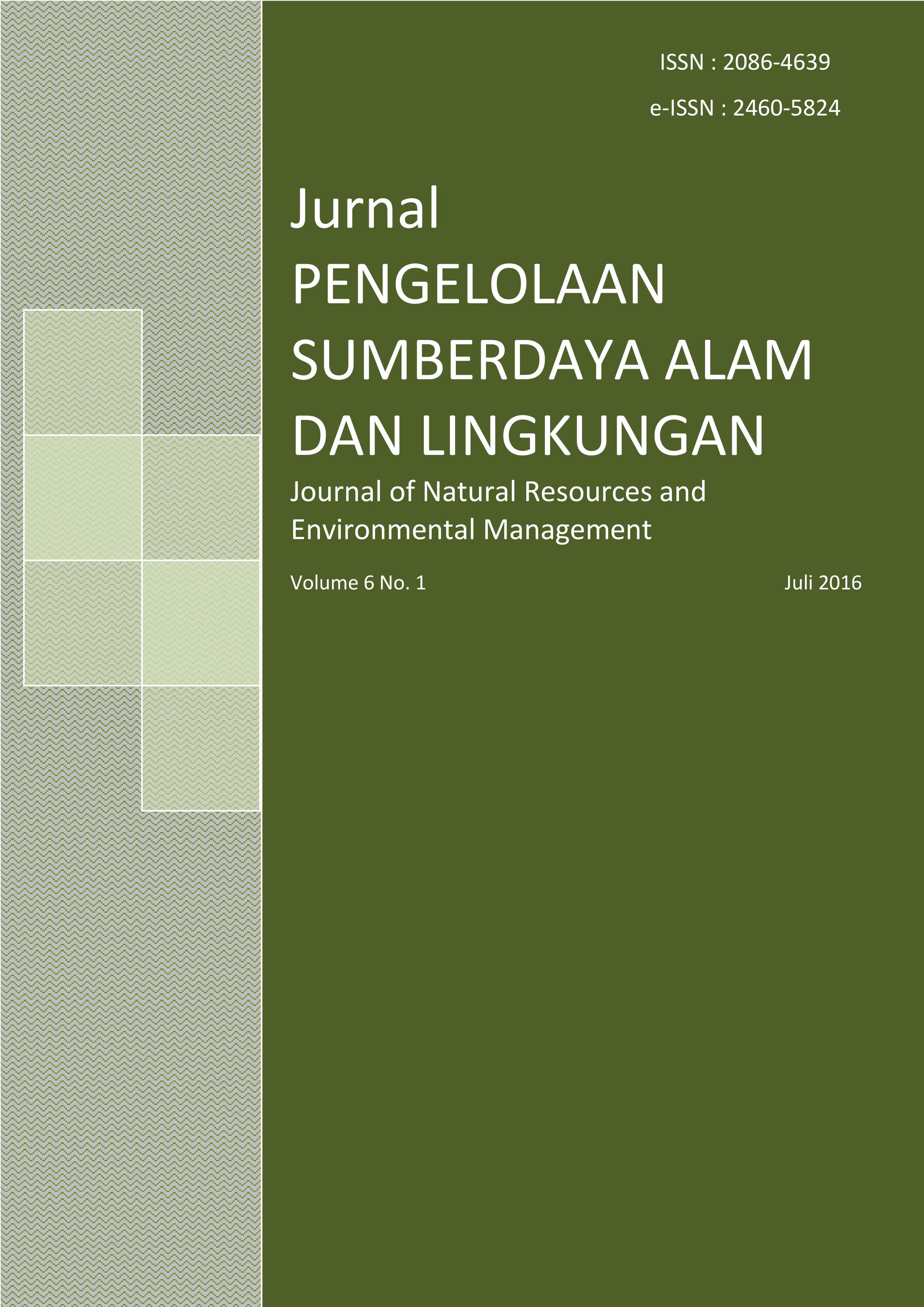SIGNIFIKANSI PREVENTIVE EXPENDITURES VALUATION DALAM BIOPROSPEKSI SUMBERDAYA GENETIK DI INDONESIA
Abstract
References
Allsopp, M. et al., 2009. State of the World’s Oceans. Springer Science, Netherlands.
Andow, D. A., C. Zwahlen, 2006. Assessing environmental risks of transgenic plants. ecological letters 9, pp.196–214.
Arrow, K., M. Cropper, G. Eads, R. Hahn, L. Lave, R. Noll, P. Portney, M. Russel, R.Schmalensee, S.V. Kerry, R. Stavins. 1996. Benefit-cost analysis in environmental, health and safety. The Annapolis Center and Resources for the Future, American Enterprise Institute.
Byrd, D. M., R. Cothern, 2000. Introduction to Risk Analysis. A Systematic Approach to Science-Based Decision Making. Government Institutes. CEC. European Council Directive 2001/18/EC, Rockville.
CEC. 2000. Communication From the Commission on the Precautionary Principle. [6] De Melo-Martin, I., Z. Meghani, 2008. Beyond Risk. EMBO Reports 9, pp.302–308.
Elliot, C. Kevin, Dickson, Michael, 2012. Distinguishing Risk and Uncertainty in Risk Assessments of Emerging Technologies. Pantaneto Issue 48-October 2012.
[EEA] European Environment Agency. 2002. Late Lessons from Early Warnings: The Precautionary Principle 1896–2000. EEA Risk Paper.
Eurobarometer, 2006. Europeans and Biotechnology. Dalam: Pattern and Trends, Eurobarometer 64.3, G. Gaskell et al., DG Research, Brussels.
Graham, J. D., J.B.Wiener, 2008, The Precautionary principle and risk-risk tradeoffs: a comment. Journal of Risk Research 11,pp. 465–474
Kanongdate, K., M. Schmidt, K. Rene, Wiegleb, Gerhard, 2012. Has implementation of the precautionary principle failed to prevent biodiversity loss at the national. Biodiversity and Conservation 21, pp.3307–3322.
Kriebel, D., J. Tickner, P. Epstein, J. Lemons, R. Levins, E. L. Loechler, et al., 2001. The Precautionary principle in environmental science. Environmental Health Perspectives 109, pp. 871–876
Leipert, C., 1989. Social costs of the economic process and national accounts: the example of defensive expenditures. The Journal of Interdisciplinary Economics 3, pp. 27–46.Levidow, L. 2001, Precautionary uncertainty: regulating gm crops in europe. Social Studies of Science, 31 pp. 842–874.
Myhr, A.I., 2010. A Precautionary approach to genetically modified organisms: challenges and implications for policy and science. Journal of Agriculture and Environment Ethics 23, pp. 501–525.
Morris, J. 2002, The Relationships between risk analysis and the precautionary principle. Toxicology, pp. 181–182, 127– 130.
Pomeroy, R.S., 1992. Economic valuation: available methods. Dalam: ICLARM Conference Proceedings 37, editor. Integrative Framework and Methods for Coastal Area Management, pp. 149–162.
Ribaudo, M., J.S. Shortle, 2001. Estimating benefits and costs of pollution control policies. Environmental Policies for Agricultural Pollution Control. CABI Publishing, UK, pp. 85–122.
Sandin, P., 2004. The Precautionary principle and the concept of precaution. Environmental Values 13, pp. 461–475.
Saunders, T. Peter, 2000. Use and abuse of precautionary approach. Dalam: The ISIS submission to US Advisory Committee on International Economic Policy (ACIEP) Biotech.
Sorensen, J., 1997. National and international efforts at integrated coastal management: definitions, achievements, and lessons. Coastal Management 25, pp. 3–41.
Starling, 2007. Risk precaution and science: towards a more constructive policy debate. EMBO Reports 8, pp. 309–315.
Stirling, A. 2008, Science precaution and the politics of technological risk. Annuals of New York Academy of Sciences, 1128, pp. 95–110
Tsunokawa, Koji, C. Hoban, 1997. Roads and the environment: a handbook. The International Bank for Reconstruction and Development. World Bank Technical Paper 376, US.
UNESCO COMEST. 2005. The Precautionary Principle. UNESCO Communication Paper.
Von Schomberg, R. 2006, The Precautionary Principle and its Normative Challenges. Dalam Chapter 2, editor E. Fisher, et al. (Eds.). Implementing the Precautionary Principle: Perspetives and Prospects. Cheltenham, UK.
Weiss, A., 2007. Defining Precaution. Environment, 49(8), pp. 36–39.
Authors
Authors who publish with this journal agree to the following terms:
- Authors retain copyright and grant the journal right of first publication with the work simultaneously licensed under a Creative Commons Attribution License that allows others to share the work with an acknowledgement of the work's authorship and initial publication in this journal.
- Authors are able to enter into separate, additional contractual arrangements for the non-exclusive distribution of the journal's published version of the work (e.g., post it to an institutional repository or publish it in a book), with an acknowledgement of its initial publication in this journal.
- Authors are permitted and encouraged to post their work online (e.g., in institutional repositories or on their website) prior to and during the submission process, as it can lead to productive exchanges, as well as earlier and greater citation of published work (See The Effect of Open Access).






